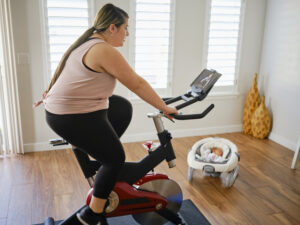
Increase in annual cardiorespiratory fitness by 3%+ linked to 35% lower prostate cancer risk
Encourage men to improve fitness to help lower risk of getting the disease, say researchers
An increase in annual cardiorespiratory fitness by 3% or more is linked to a 35% lower risk of developing, although not dying from, prostate cancer, suggests research published online in the British Journal of Sports Medicine.
The findings prompt the researchers to conclude that men should be encouraged to improve their level of fitness to help lower their chances of getting the disease.
There are relatively few known risk factors for prostate cancer, note the researchers. And while there’s good evidence for the beneficial effects of physical activity on the risk of several cancers, the associations with prostate cancer are less clear-cut.
Most previously published studies have assessed fitness at only one time point, and none has looked at the potential impact of fitness on both the risk of developing and dying from prostate cancer, explain the researchers.
They therefore wanted to find out if improvements in cardiorespiratory fitness over time might influence these risks, drawing on a national occupational health profile assessment database.
The database collected information on physical activity, lifestyle, perceived health, measurement of body mass and height, and the results of at least 2 cardiorespiratory fitness tests, measured by peddling on a stationary cycle, for 57,652 men out of a total of 181,673.
Annual cardiorespiratory fitness measurements were expressed as absolute and relative V02 max—the amount (volume) of oxygen the body uses while exercising as hard as possible—and divided into groups according to whether these increased annually by more than 3%, fell by more than 3%, or remained stable.
And to assess whether change in fitness on prostate cancer risk varied by baseline fitness, 3 equally sized groups of low, moderate, and high cardiorespiratory fitness were created.
For the incidence analysis, all participants were monitored from the date of the last assessment to the date of their prostate cancer diagnosis, or death from any cause, or until 31 December 2019, whichever came first.
For the mortality analysis, their survival was tracked from the date of their second assessment to either the date of death from prostate cancer, death from any cause, or until 31 December 2019, whichever came first.
During an average period of nearly 7 years, 592 men (1% of the total sample) were diagnosed with prostate cancer, and 46 (0.08%) died of their disease.
An annual percentage increase in absolute cardiorespiratory fitness was associated with a 2% lower risk of prostate cancer, but not death, after accounting for potentially influential factors, including age, education level, year of test, weight (BMI), and smoking status.
When participants were grouped according to whether their cardiorespiratory fitness had increased, remained stable, or had fallen, those whose fitness had improved by 3% or more a year were 35% less likely to develop prostate cancer than those whose fitness had declined, after accounting for potentially influential factors.
When the participants were grouped by their cardiorespiratory fitness at their first assessment, the association between fitness and a reduction in prostate cancer risk was only statistically significant (15% lower) for those with a moderate level of fitness to begin with.
This is an observational study, and as such, can’t establish causal factors, added to which genetic factors have a major role in both a person’s cardiorespiratory fitness and cancer risk, highlight the researchers.
But they nevertheless conclude: “The results highlight the importance of [cardiorespiratory fitness] for prostate cancer risk, which has been challenging to determine with single time point studies” adding: “Improvements in [cardiorespiratory fitness] in adult men should be encouraged and may reduce the risk of prostate cancer.”
31/01/2024
Notes for editors
Research: Association between change in cardiorespiratory fitness and prostate cancer incidence and mortality in 57 652 Swedish men doi: 10.1136/bjsports-2023-107007
Journal: British Journal of Sports Medicine
Funding: Swedish Cancer Society (Cancerfonden)
Link to Academy of Medical Sciences press release labelling system
http://press.psprings.co.uk/
Externally peer reviewed? Yes
Evidence type: Observational
Subjects: People





